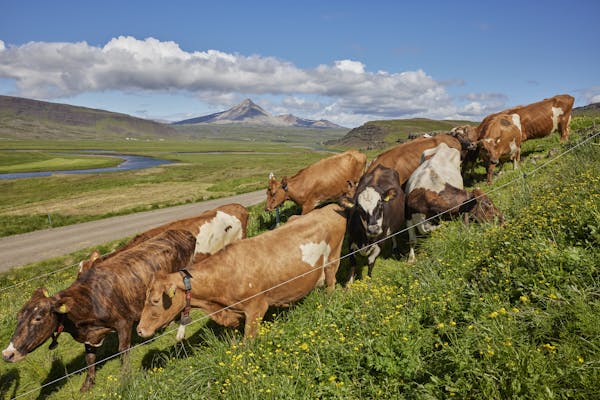Icelandic Butter
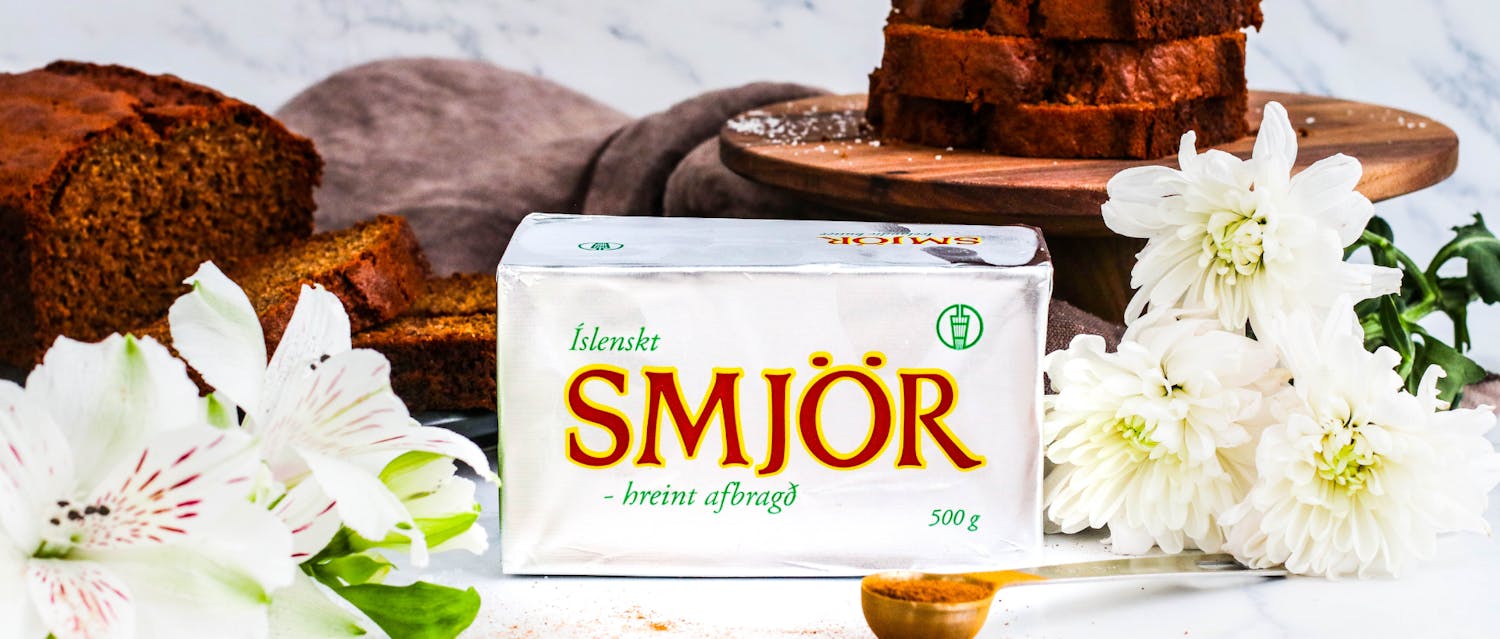
Icelandic Creamery Butter is made from fresh cream, which is produced from the milk of Icelandic cows fed on grass. Rich in flavour, its smooth texture makes it easier to spread.
- The use of growth hormones and steroids in raising cattle is completely banned in Iceland.
- There are strict rules regarding the use of and access to antibiotics in agriculture in Iceland.
- All of the milk MS receives is tested for traces of medicinal products/drugs before being pumped from the trucks into the dairies. If medicinal products/drugs are found, the milk is destroyed.
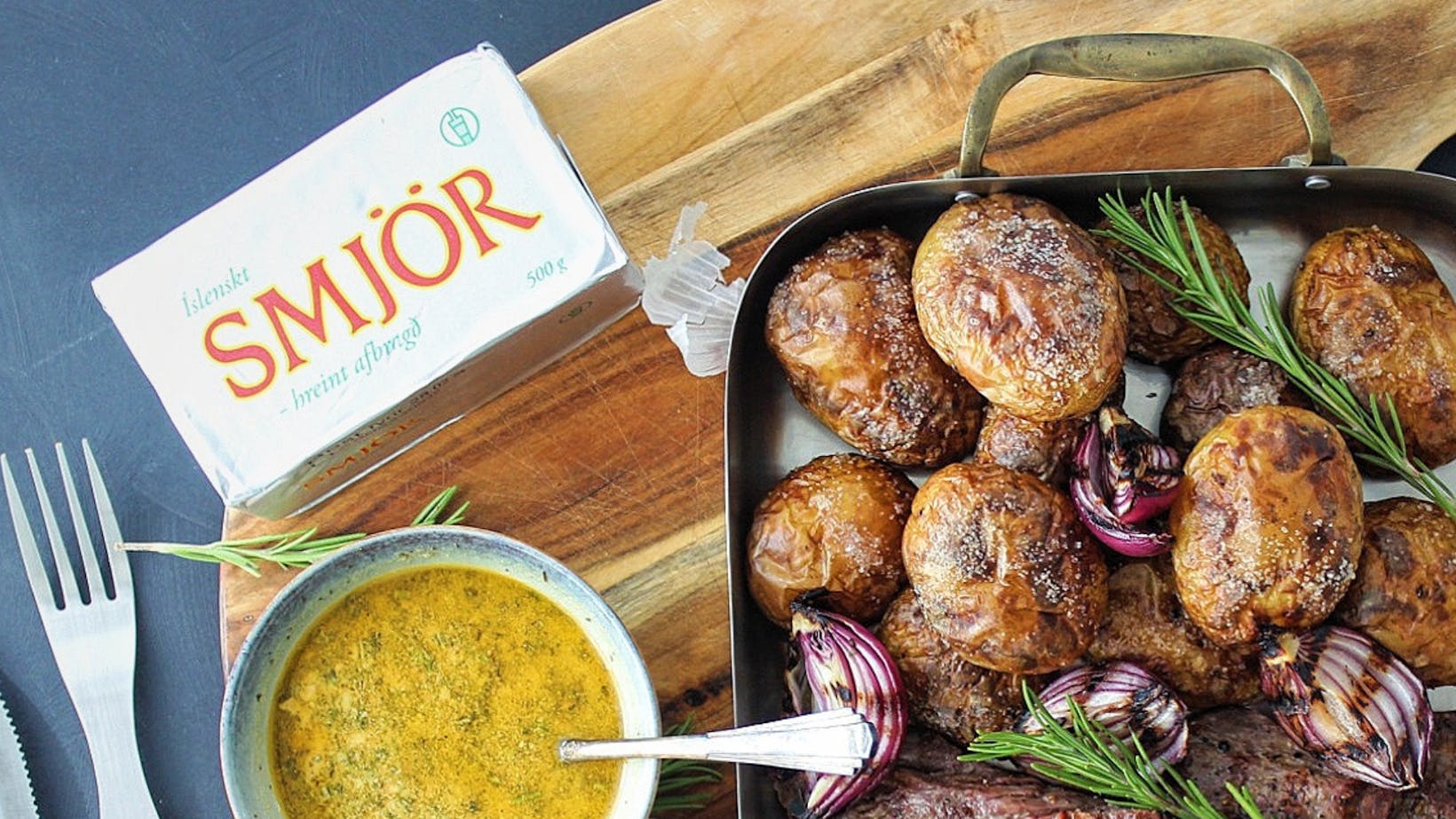
Icelandic Creamery Butter is manufactured from fresh cream, which has been produced from fresh top quality Icelandic milk. The butter has rich smooth flavor and texture, making it easier to spread.
Better butter, naturally
Nothing compares to the Icelandic butter in terms of texture and flavor and it's considered, by culinary professionals, to be of superb quality.
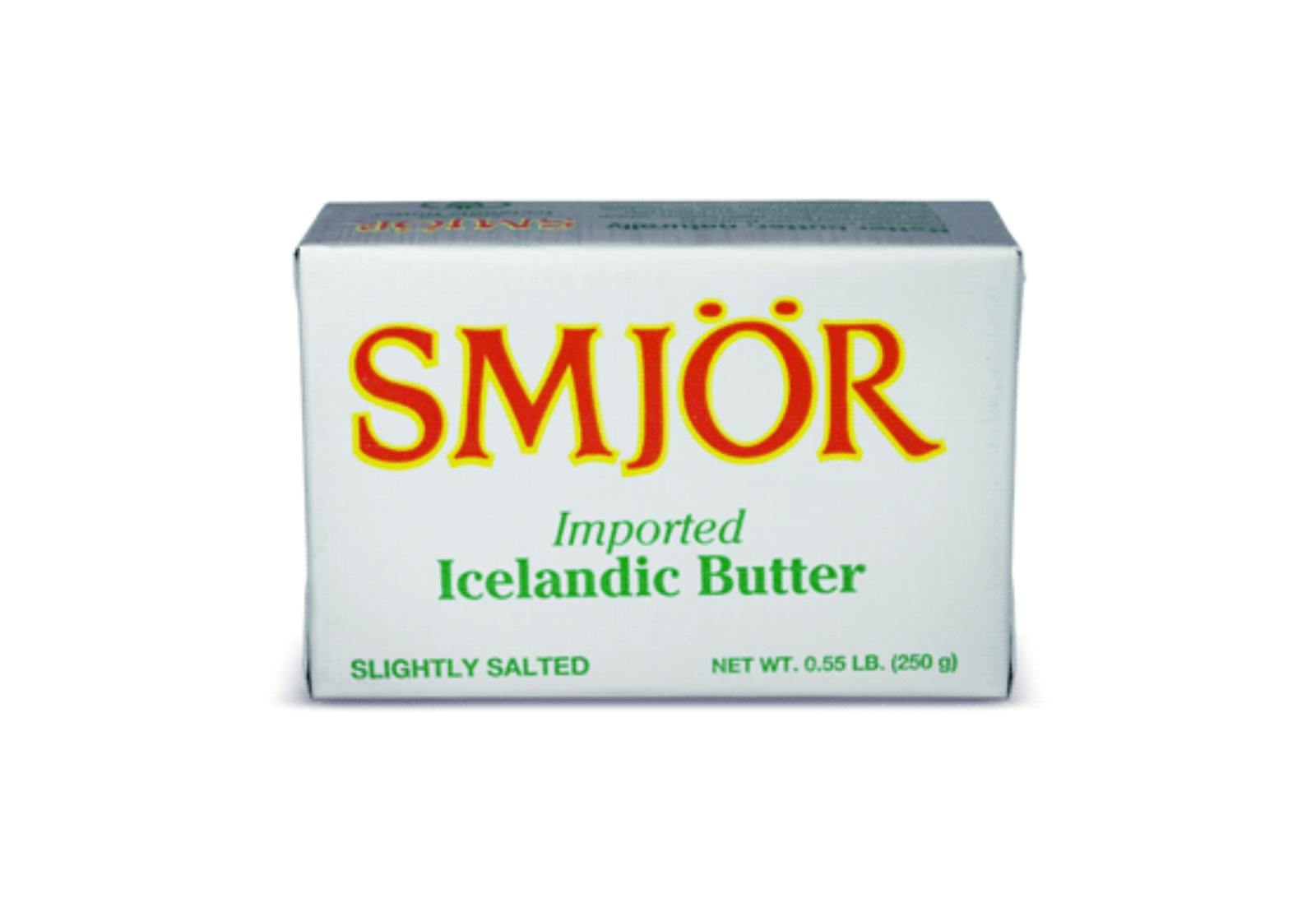
Smjör, slightly salted
Icelandic Creamery Butter is manufactured from fresh cream, which has been produced from fresh top quality Icelandic milk. The butter has rich smooth flavor and texture, making it easier to spread.
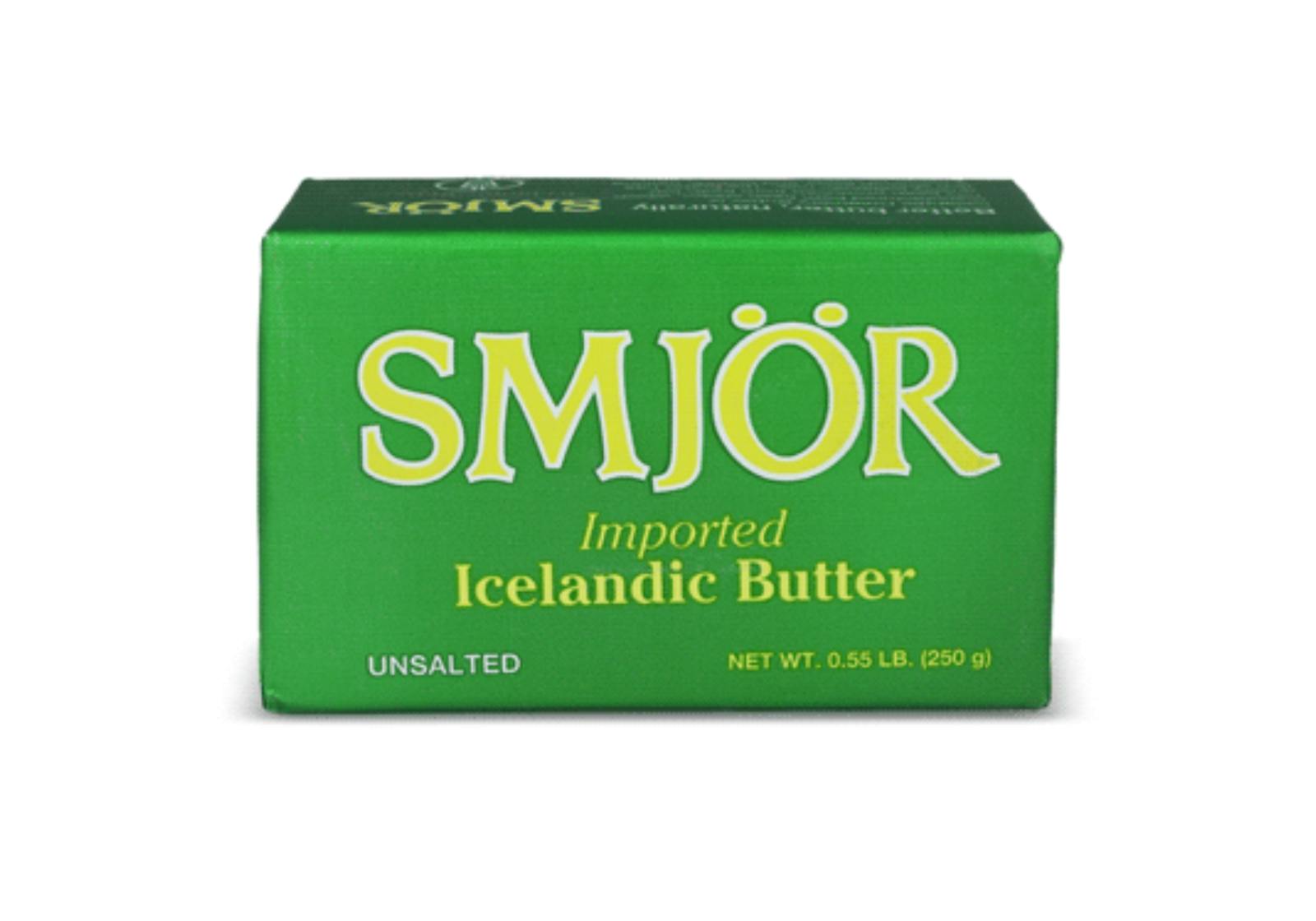
Smjör, unsalted
Our Icelandic Creamery Butter is also available unsalted so our customers have a choice as to which is more suitable in each case. The unsalted butter has like the slightly salted type both rich smooth flavor and texture.
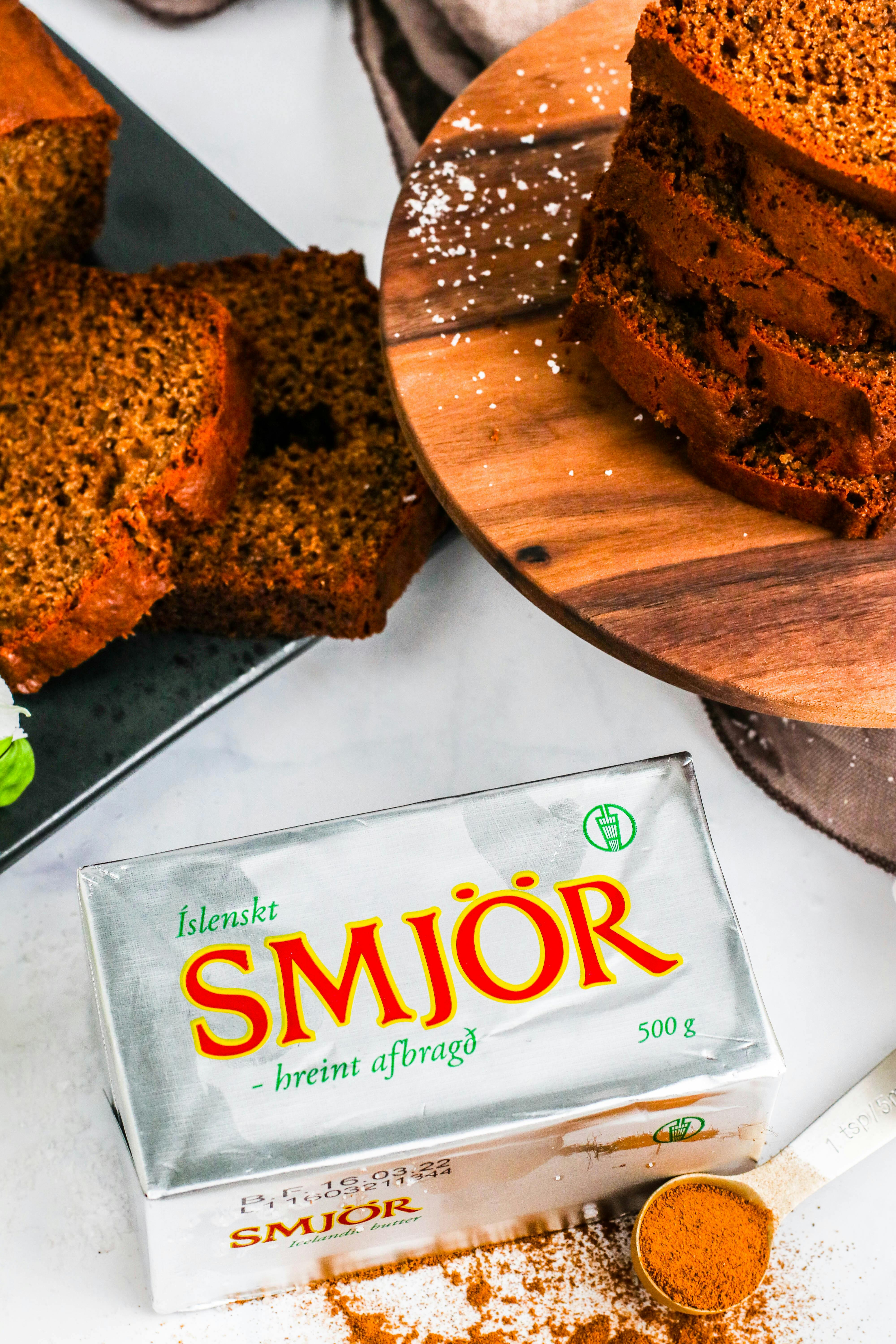
Whole Foods Market is now the world's leading retailer of natural and organic foods, with hundreds of stores in North America.
Whole Foods Market strives to offer the highest quality, least processed, most flavorful and naturally preserved foods.
The Whole Foods Market mission is:
We're highly selective about what we sell, dedicated to stringent quality standards, and committed to sustainable agriculture.
We believe in a virtuous circle entwining the food chain, human beings and Mother Earth: each is reliant upon the others through a beautiful and delicate symbiosis
Where to buy Smjor
In the USA, Smjor is available at Whole Foods Market stores in the following regions.
North East: Connecticut, Maine, Massachusetts, New Hampshire, Rhode Island, Vermont, New York, Pennsylvania.
E&B's Natural way distribute SMJÖR in the USA and more information can be found on the company's website
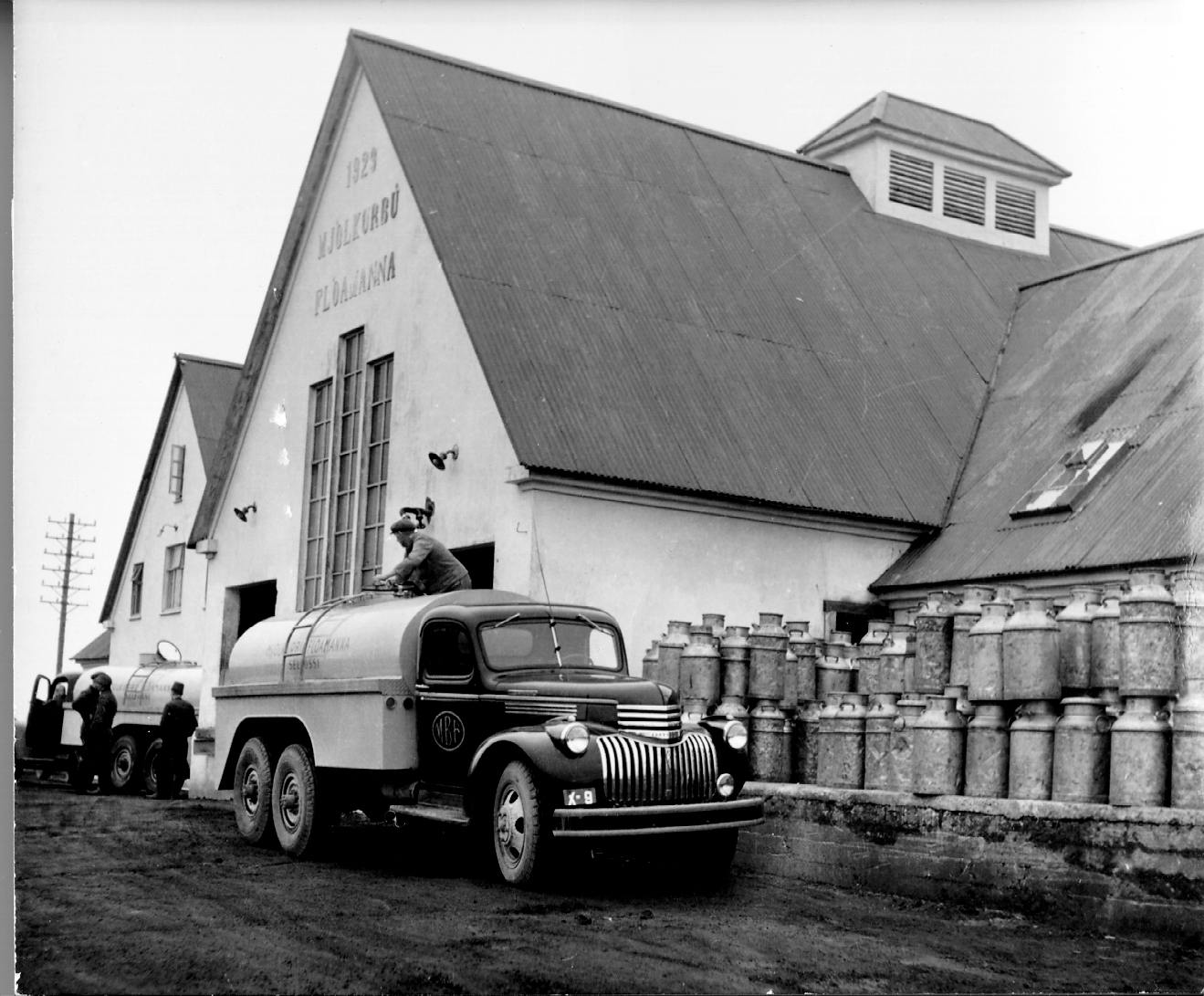
In the old days, Icelandic butter was made in a plunger churn. Butter was produced using milk both from cows and from ewes. The milk was placed in a trog (a wooden tray with high sloping sides) and left to stand, after which the skimmed milk was drained from beneath the cream through a hole in one corner of the trog into a separate container. The cream was then churned in the plunger churner. This was quite hard work, and it was considered quickly accomplished if it took only 6–7000 plunges to make the butter. As a matter of fact, there are stories of housekeepers saving themselves some work by tying the churner onto the back of a herder before he left to herd the sheep so that the butter was churned while he was running after the animals—this, however, would not have been a common method. Once the churning was finished, the butter was kneaded to eliminate most of the buttermilk, then formed into blocks. Skimmed milk and butter milk (the liquids that remain after butter has been churned) were not wasted—buttermilk was considered a delicacy and it was sometimes mixed with skimmed milk.
In Iceland, butter had generally turned rancid by the time it was used, and in fact it was not considered to be tasty enough unless it had “gone off”. Sometimes the butter was mixed with lamb fat, and it wasn’t until the 19th century that salt was added. It was stored in pods or caskets called “grásída” (greysides), often for very long periods. People usually had considerable stores of butter; it was used extensively, and it was considered a source of strength during the harsh winter months when people needed to consume a lot of fat. The recommended portion was approximately 1700 g a week per person. In some places, children were slathered with butter to improve their health, and butter was given to weak lambs. There are stories of butter being used instead of soap and, according to folklore, butter mixed with fish liver oil and the brain of a raven could be used as a cure for swellings.
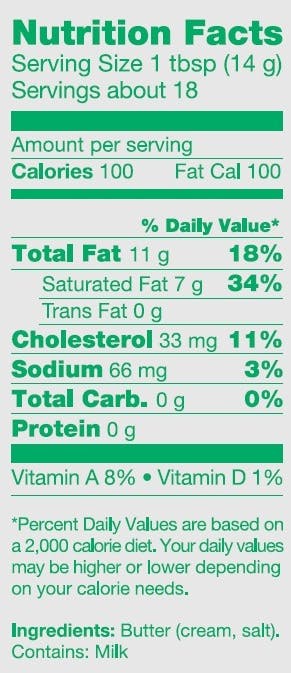
Pure Icelandic butter - no additives.
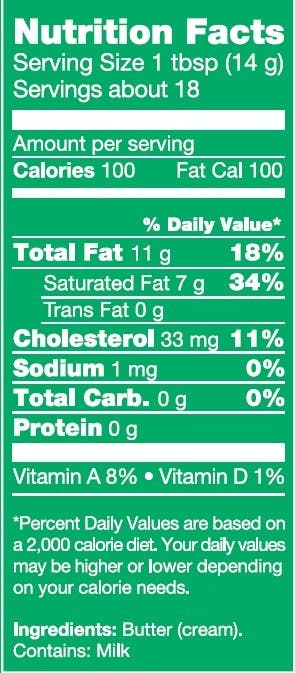
Pure Icelandic butter - no additives.
The Icelandic cow originates from cattle brought from Norway during the settlement of Iceland in the 10th century. Ever since there has been little or no import of dairy cows which has made the breed unique in the world. It is the only breed of dairy cows in Iceland, and because of the isolation it is free from most of the diseases that are frequent in many countries. During the bright summer days the cows are kept in the pastures, but are housed during 7-8 months per year. Most Icelandic cows have no horns, but the breed presents a large variety of colours, the most common being red or red pied, brindle, brown and black or black pied. To add to the cow’s individuality all dairy cows in Iceland bear their own names.
